There are a lot of choices when navigating steak options at your local butcher shop, and chances are, you’ll end up being steered toward two premier cuts.
The New York Strip and the Ribeye are the two most accessible high-end cuts that showcase the diversity of the cow.
Based on a decade in pro kitchens, I’ve found the New York Strip is more diverse in terms of usage among a variety of cooking techniques. It’s the leaner cut of the two. Consisting of a lesser amount of marbling, though still a tender cut.
The Ribeye contains significantly more internal marbling. This marbling contributes to a deeper, richer beefiness and a more velvety tenderness. For me, the Ribeye is the best cut on the cow. Showcasing depth and richness seasoned simply with salt and pepper.
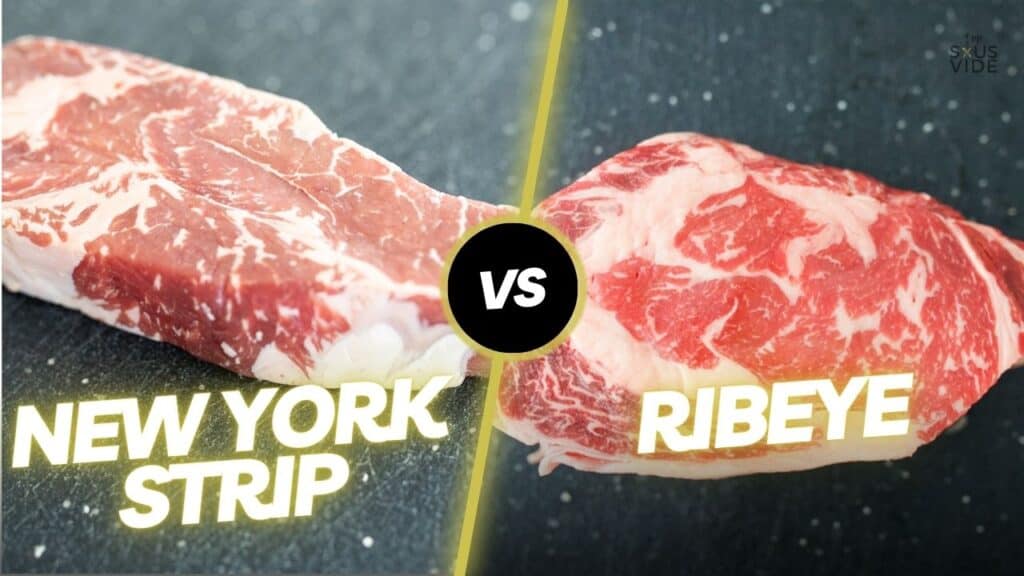
There are still many other factors worth considering when you’re weighing these two options. And the best steak for you will ultimately depend on your end goal.
In this article, you’ll get tips from a pro that should help you understand the differences between New York Strip vs. the Ribeye steak and when either cut will be your best bet.
Table of Contents
What Is a New York Strip?
The New York Strip is a cut of steak originating in the Loin Primal of the cow. Here’s a quick anatomy lesson.
In the cow’s “Loin Primal,” there is a sub-primal area called the strip loin. The strip loin is further broken down into either bone-in or boneless New York Strip steaks.
The fat cap is typically left on, though it can be removed if you prefer a lean steak.
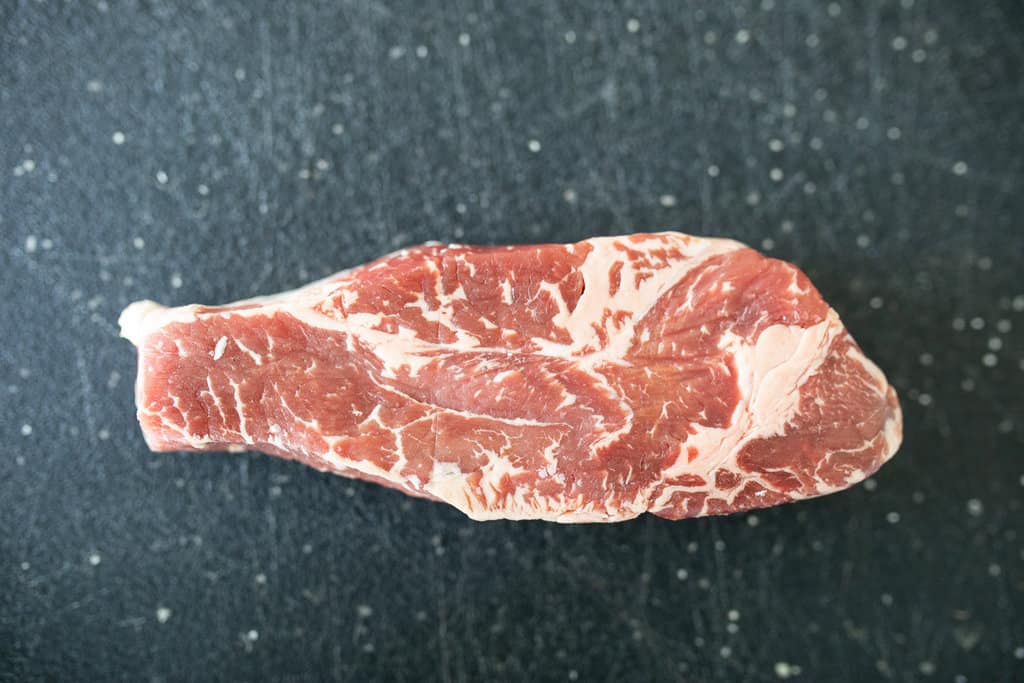
The strip steak is tender in its own right, though its fat cap can lend to a bit of chewiness. Not ideal for some, though it can be preferred by certain steak lovers.
Other names for the New York Strip include Kansas City Steak, Strip Loin Steak, Shell Steak, and Club Steak.
What Is a Ribeye?
The Ribeye steak is a cut originating from the “Rib Primal” of the cow.
The rib primal is actually the only Primal on the cow that can be cooked as is, though the parts of the sum are lovely on their own, so it’s worth splitting them up.
The Rib Primal is further broken down into a bone-in Ribeye Roast, which can then be broken down into bone-in Ribeye Steaks. Remove the bones for the boneless alternatives.
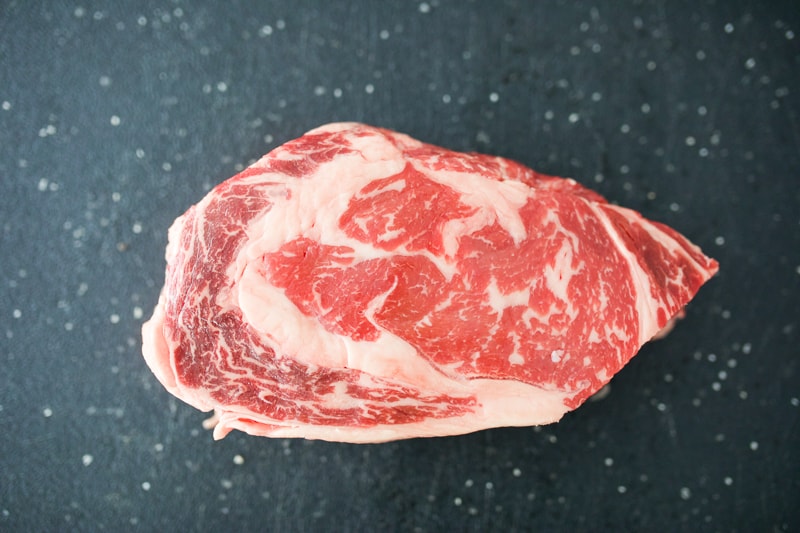
The Ribeye is a cut of steak benefitting from deep marbling and tenderness.
Differences between New York Strip and Ribeye
The New York Strip and the Ribeye are both very different in what they offer steak lovers. In this section, I’ll capture the strengths and characteristics of each cut, and how they differ.
Tenderness
Both cuts are somewhat tender, although they each eat very differently and have considerable differences in texture.
The New York Strip has a firm texture throughout.
Since it is a less marbled steak, you’ll typically find it cut thicker, usually over an inch thick. This is because the steak is more forgiving when being cooked. Since it is not a very fatty steak, it could quickly turn dry.
A thicker cut allows more room to get a proper sear and achieve the desired target temperature evenly.
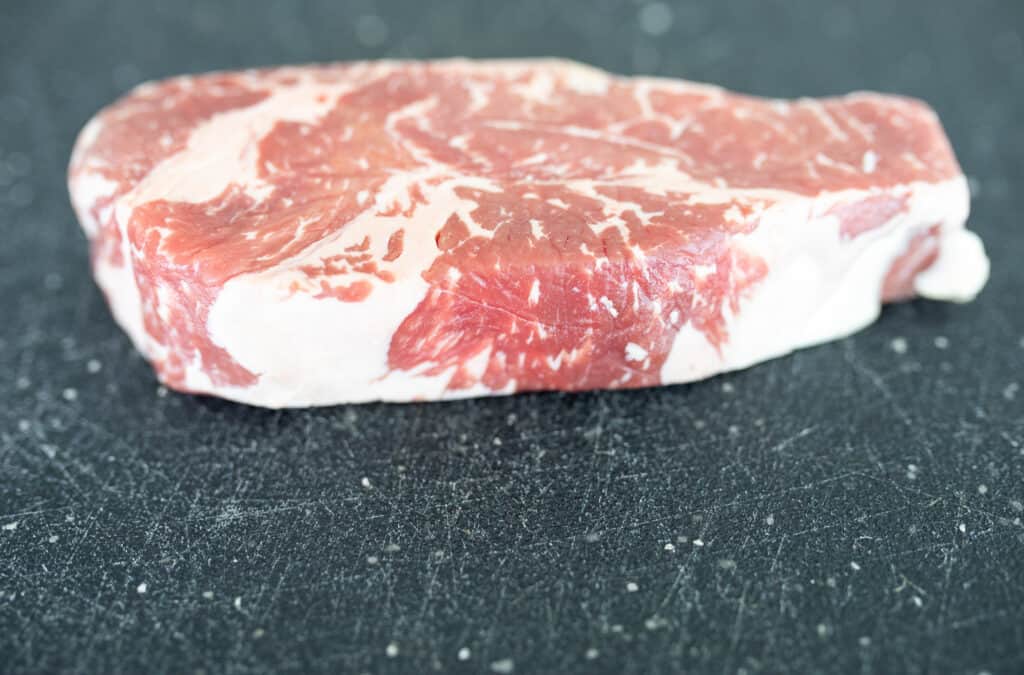
Texturely, the New York Strip tends to eat on the chewy side. This is due to the thicker fat cap and the steak’s leanness. Some prefer this firmness to the melt-in-your-mouth texture fattier steaks provide
The Ribeye steak is the more tender of the two.
It has more internal marbling, which creates a more luxurious mouthful and a richer beef flavor. This extra fat can mean a different chewiness than the more muscly dense Strip.
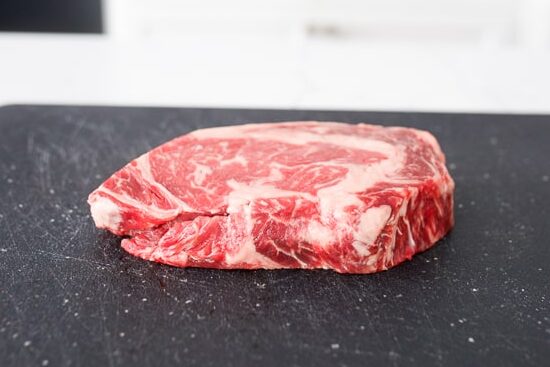
The fat content is significantly higher in the Ribeye, so not always the best pick for all.
Cooking Variances
The marbling and leanness of each cut play a considerable role in the end product of your steak.
The New York Strip will cook faster since it is a leaner steak.
The Strip is the perfect steak for grilling and would lend itself to intensive marinating or heavy crusting.
In comparison, the Ribeye is less than ideal for grilling. Its high fat content will eventually render out and cause many flare-ups on the grill. I wouldn’t suggest grilling Ribeyes unless you have good experience managing multiple degrees of heat across your grill.
I prefer using NY Strip in recipes that call for beef that does not undergo long cooking times. Examples include stir fry, curry, or grilled beef fajitas.
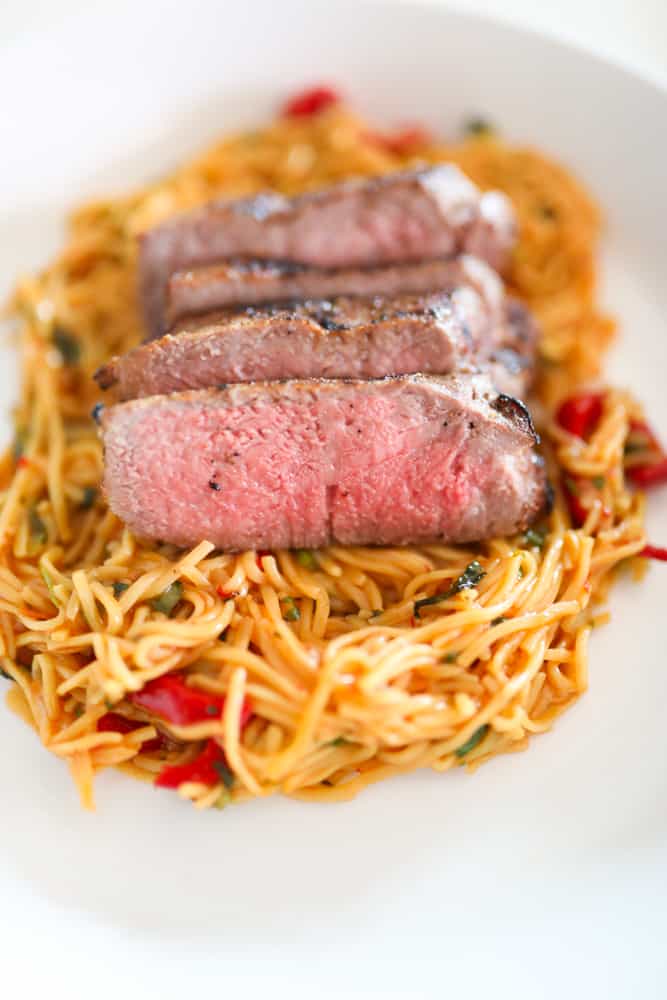
Comparatively, the Ribeye steak can really shine with pan searing vs. grilling.
Pan-searing a Ribeye steak allows all that delicious fat to be a part of the cooking process. This will further add to the richness in flavor and moistness of the steak.
When it comes to sous vide, I find the NY Strip to be superior to sous vide Ribeye.
You can impose a higher concentration of fat in the vacuum bag. This will result in a more buttery Strip steak you wouldn’t otherwise experience.
You also get the magic of sous vide’s textural transformation past the 4-hour cook point. This is the one exception to my shorter is better for New York Strip mentality. I find this textural change to benefit the NY Strip in the best ways.
Price Comparison
Generally, New York Strips tend to be the cheaper of the two steaks.
At a steakhouse in NYC, a New York Strip will start around $35 for a 16oz steak, while a Ribeye can begin around the $40 range for the same size.
Price also depends on the grade of each steak (prime, choice, or select).
I prefer to spend top dollar if I’m choosing a New York Strip. I also find that grass-fed strips tend to taste better.
Since the NY strip is so lean, I prefer to have the highest quality of beef here.
In comparison, I’ve had choice Ribeye steaks that still pack a ton of beefiness and tenderness.
The higher the quality, the higher the price tag. With that said, you don’t have to break the bank for a flavorful, moist steak.
Nutritional Value
The fat content is the most significant nutritional variance between these two steaks.
Ribeye steaks will have a higher percentage of fat per oz of steak. Caloric load and protein content will be relative to one another. More fat equals more calories and less protein and vice versa.
Recap
Between the Ribeye and New York Strip steak, there are many differences to consider.
The Ribeye is the fattier of the steaks. This will contribute to a richer, more tender finish product. This cut will shine with a simple pan searing with salt and pepper.
Ribeye is the pricier of the two steaks and the more indulgent.
New York Strips will be the leaner of the two. It’s a good steak for those looking for high protein with lesser fat content.
New York strip is also more flexible in different applications outside your usual steak preparation.
Related Reading: Porterhouse vs T Bone – What’s The Difference?
FAQ
Ribeye is more tender than New York Strip due to increased marbling.
If you’re looking for a cheaper version of the Ribeye steak, try a Hanger steak. It comes from the same primal region on the cow. It packs incredible beef intensity and has slightly higher internal marbling than a NY strip.
Steak lovers will gravitate to the New York strip if they prefer a firmer chew and a leaner steak.

